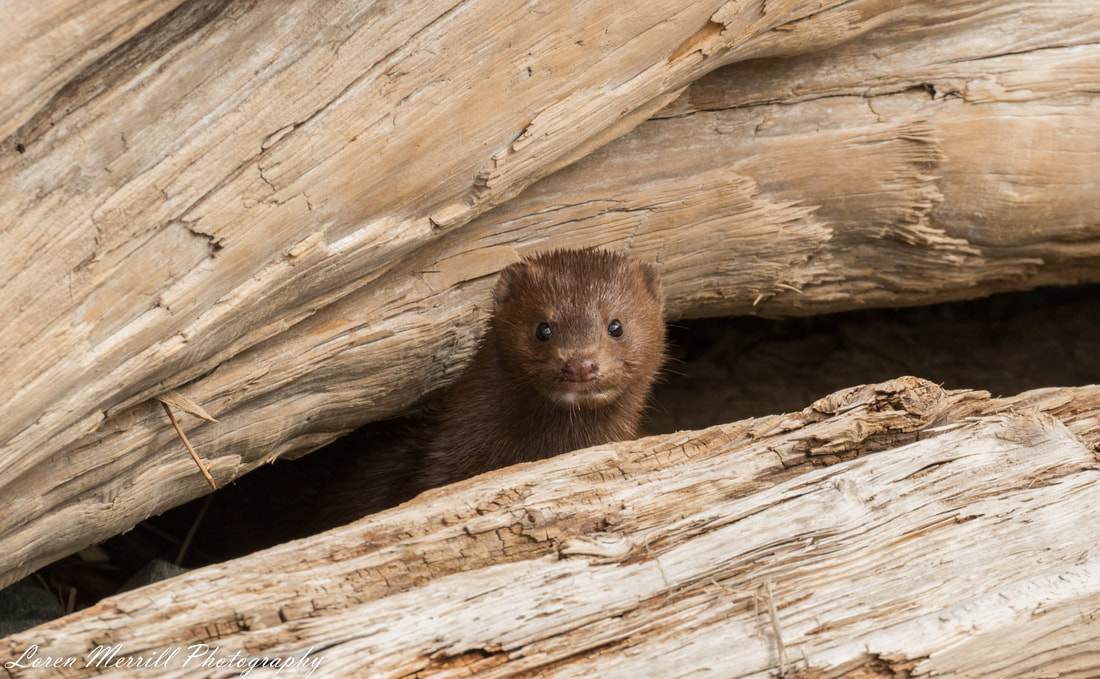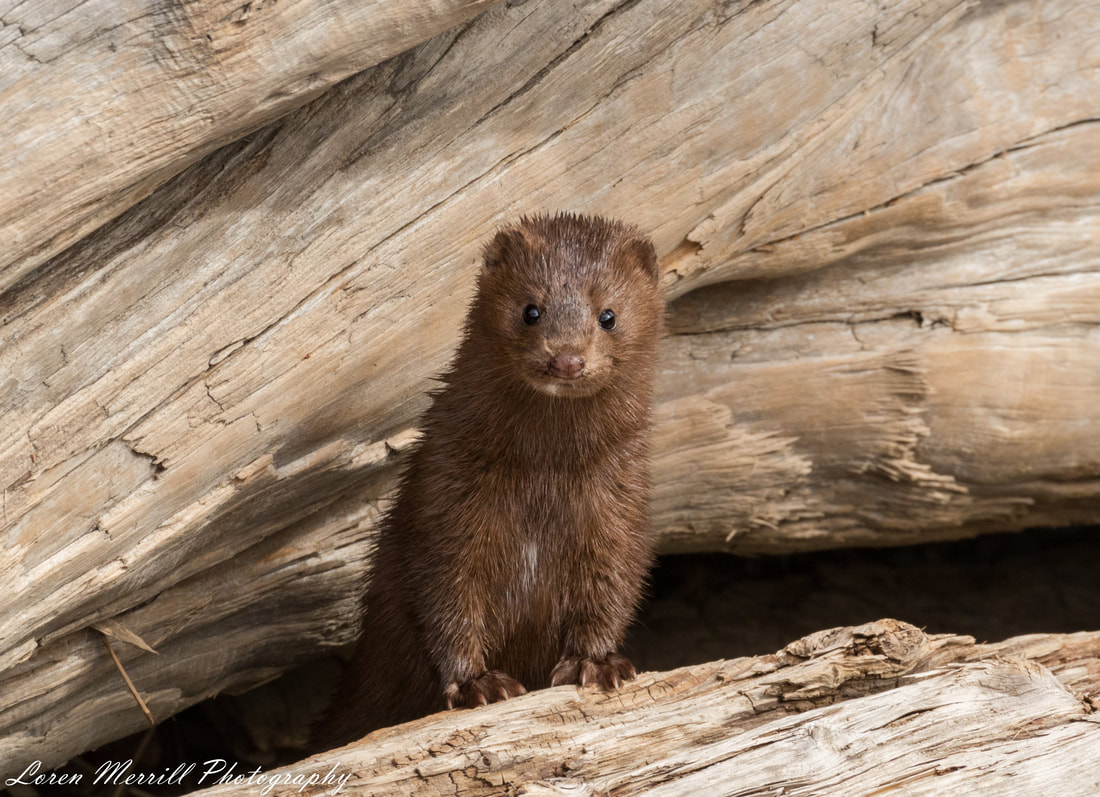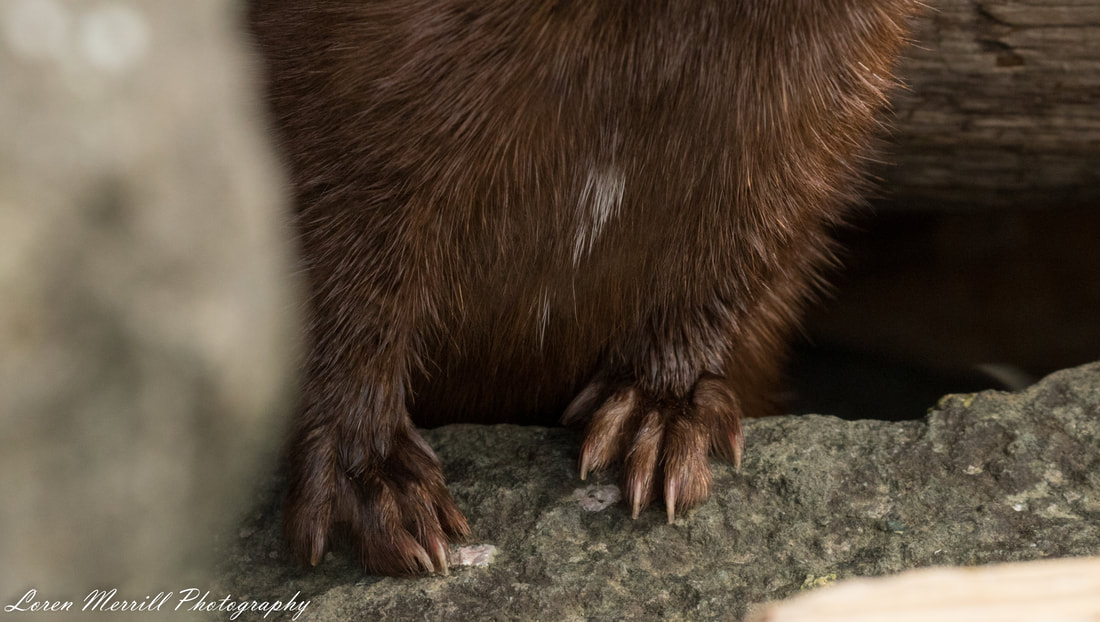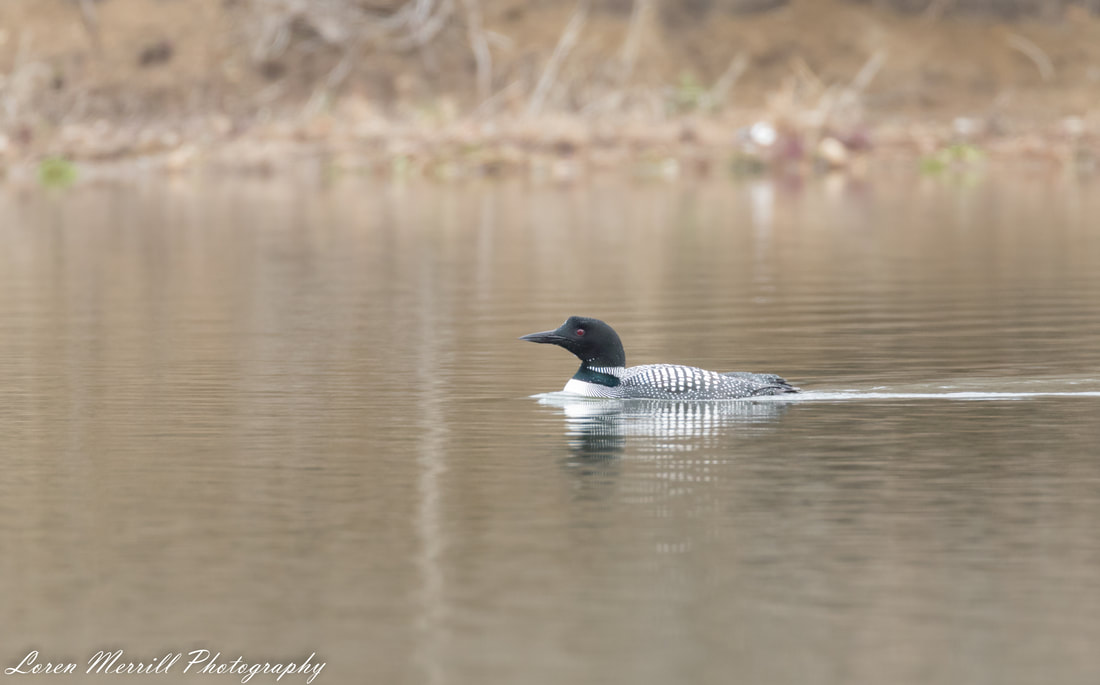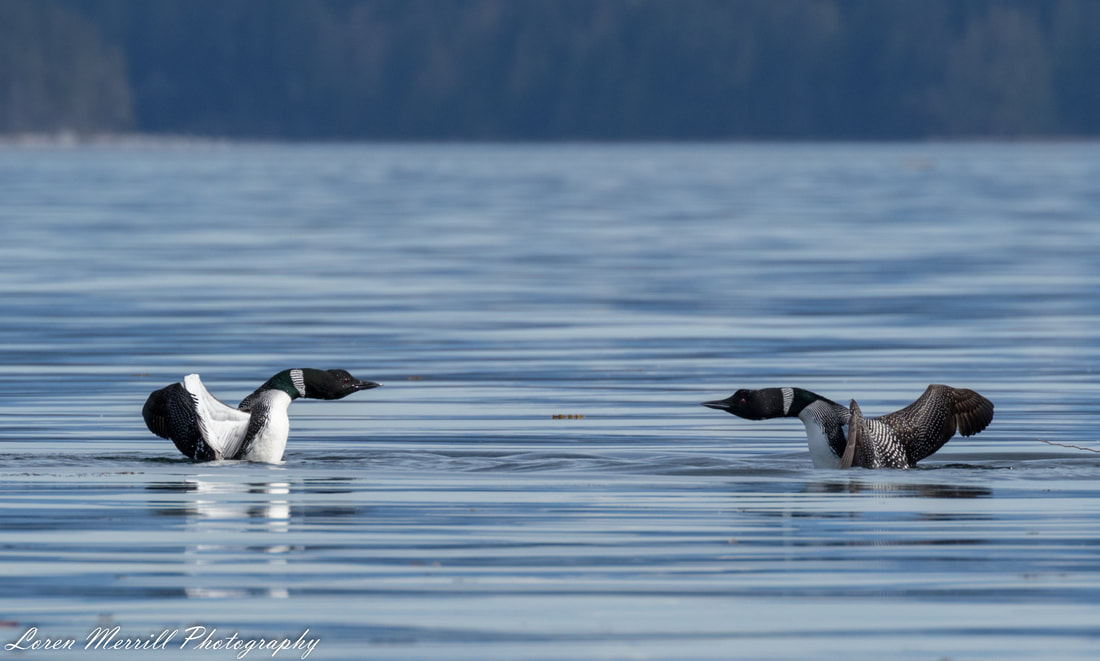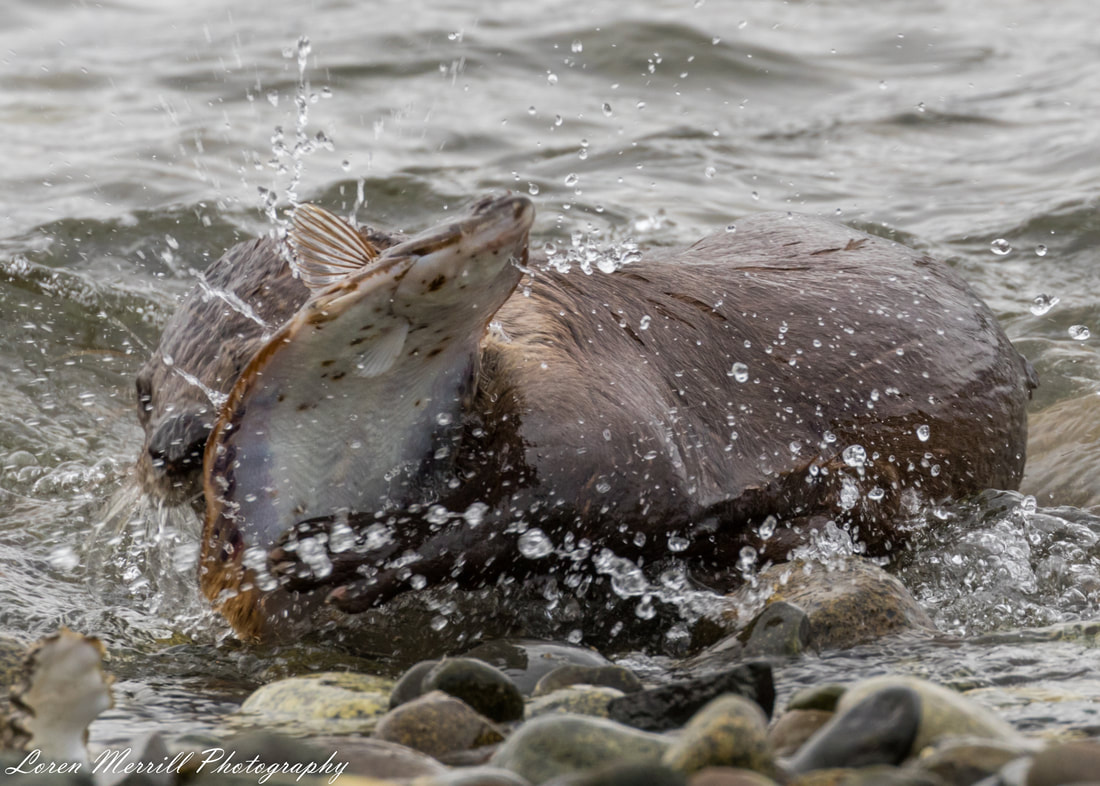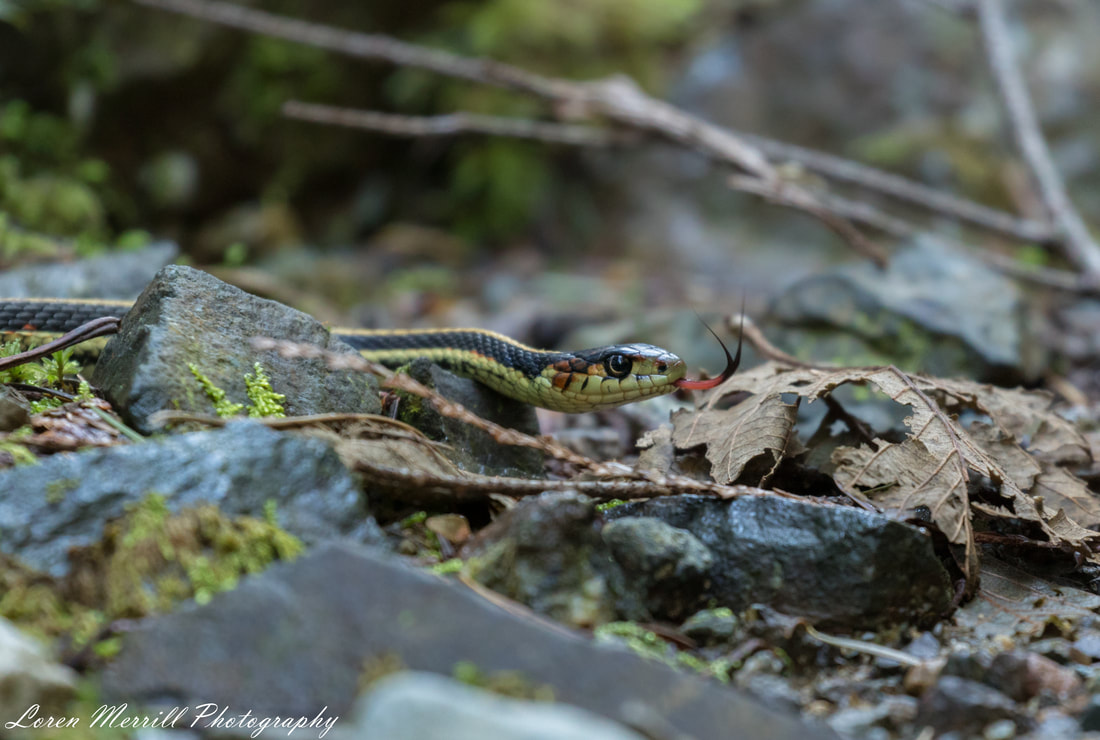|
“View vignettes” are a collection of short stories centered around images I’ve taken over time. This short-story format is a recurring theme in which I’ll cover my outdoor observations more broadly, although in less detail than normal posts. The Curious Weasel: One of the fiercest, but possibly cutest predators on Quadra Island is the American mink. These small weasels are semi-aquatic and can be found around both fresh and salt water. Here on Quadra all of my mink encounters have been along the coastline, where the mink was either running the logs on the beach, traversing rocky ledges, or darting in and out of rocky piles (kind of reminiscent of the “whack-a-mole” game). Mink are lean little carnivores and can fit into tiny holes (they are limited by the size of their head) in their pursuit of small mammals, crabs, insects, birds, snakes, frogs, etc. And when mink are startled by something (like a giant with a camera) they usually retreat into the nearest crevice. But their curiosity almost always gets the better of them. Last week, my wife and I were hiking with my parents when we encountered a particularly inquisitive mink. We had stopped for lunch at a narrow causeway linking Quadra and Maude Islands, and I was exploring the nearby area. I caught sight of a little brown blur zipping around a rock pile and ran around to the other side of it in an attempt to position myself somewhere I would get the mink coming towards me. My plan worked—a little too well--and the mink caught sight of me and vanished into the rocks and logs. But this mink couldn’t resist coming out for a closer look, and within seconds it was inching its way out from under a log, straining to get its sights on me. This game continued: me creeping to see the mink, and the mink creeping to see me. At one point I was sitting on the edge of a rock jumble, waiting for the mink to emerge where I had last seen it (perhaps 4-5 meters away). Instead of popping up there, the mink had crept even closer (about 2 meters) and was just sitting there, peering up at me. I didn’t want to startle the animal by moving my camera, and it just so happened that the camera was pointed in the direction where the mink had newly appeared. So I clicked off a few shots (in silent mode), hoping I had gotten lucky. I hadn’t. Unless you like images of mink feet, in which case we should talk. Common Loon Showdown: Loons are currently dotting the coastal waters around the island, and many have molted into their breeding plumage. While weeks ago they donned muted black and white, they now sport jet black feathers with white speckles accents. One evening last week I went for a quick walk at Rebecca Spit when I came across a pair of common loons foraging near each other not far from shore. There were a handful of other bird species present, and my attention was split among them and the loons. The two loons would occasionally swim past each other, turning their heads when they did so in order to keep an eye on each other. I thought this was some form of pair-bonding behavior, and when the two birds dove at the same time, I turned to watch a group of harlequin ducks engaging in their usual shenanigans. Suddenly, there was a large splash. My attention quickly turned to the loons as they burst from the water, and faced off in a ritualized showdown. Elevated partially out of the water, the loons stretched their wings wide, arched their necks forward, and called at each other. They maintained these elaborate postures as they floated closer to one another until they were beak to beak. Then right before the point of touching, one bird seemed to deflate, and sank back down onto the surface of the water. With the matter of social dominance settled, the two birds drifted apart to forage on their own. The Insatiable River Otter: Almost every river otter I’ve seen has either been looking for something to eat, in the process of eating, of cleaning up after eating. So when I noticed an otter along the shoreline last weekend, I was not surprised to find that it was eating something. Curious to learn what this particular otter was eating, I crept down to the water’s edge and slowly made my way closer to it. The otter was fully engaged in munching down its meal, which appeared to be some kind of fish. I snapped a bunch of photos, took some video, and watched the otter enjoy its meal. When it had finished eating, the otter turned, splashed through the waves, and began swimming away. A small group of harlequin ducks watched nervously from the shore as the otter swam nearby. When the otter dove underwater, the ducks decided they didn’t want to take any chances and flew off. With the otter and ducks gone I, too, decided to leave the scene. But once I began walking down the beach, the otter decided to reappear. The otter had surfaced and was swimming towards me with something large and silver in its mouth. I sat down on the wet beach rocks to see what would unfold. As the otter emerged from the waves, the fish in its mouth came free and began splashing through the shallows. The otter quickly regained control of its prey and with both paws it grabbed the fish (which turned out to be a large flounder) like a kid with a giant piece of pizza. The otter ravenously consumed the entire fish then turned and porpoised through the water a few times before diving. Feeling certain the otter was sated, I got up and again began walking away. When I had walked maybe 50 meters I looked back to see the otter returning to shore with yet another flounder in its mouth. I continued walking on, marveling at the otter’s ability to put away a significant portion of its body weight in seafood in the matter of 30-45 minutes. The Amazing Newt Ball: The island’s rough-skinned newts are still on the move in their quest for love, and most of our driving trips include a pit stop to remove newts from the road. In a previous post I discussed the matting aggregations known as “newt balls”, in which males wrestle over access to a female. A few days ago, I was exploring a logging road near our house when I came across a small drainage ditch located just off the road. I looked into the clear water and quickly saw a handful of newts positioned around the basin. A sudden movement caught my attention and I realized that there was a cluster of newts tucked in among a few rocks – a newt ball! It was difficult to determine how many newts were there at first, but soon the cluster began turning and writhing, and the competition for access to the female in the middle began to heat up. As the newt ball turned, a few of the males on the periphery fell away, and then it was down to two males. The victor quickly maneuvered the female away from the other male and a few late-comers, and then swam her off to a quiet area where he would deposit a spermatophore (sperm packet) in the hopes that the female would pick it up with her cloaca. The little pool had newt eggs attached to pieces of submerged vegetation, which were a testament to previous successful newt ball wrestling matches. The Sluggish Snake:
The onset of spring has triggered the emergence of a number of animals, including the island’s garter snakes, of which there are two or three species. Garter snakes spend the winter in underground hibernacula and appear when the weather begins to warm. Of course, warm spring days can be followed by cold spring days, and that has been the case for the past few weeks. My wife and I were hiking on the Nugedzi Lake trail about a week and a half ago on one of these cold spring days when we came across a common garter snake lying on the trail. The snake didn’t seem interested in or capable of moving; most snakes will quickly slither away when approached, but this one just laid there, motionless. I used this rare opportunity to take a couple of shots. When I was done I went to move the snake off the trail and just as my hand got close to the snake, its forked tongue came out. Snakes “taste” the world around them with their tongues, and this snake was trying to figure out what sort of a threat I might be. Of course, if I’d been a real threat, the snake would have been in trouble a long time before the tongue came out. Very slowly, the tongue curved upwards and then downwards before being retracted. At that point, the molecules that had bound to the tongue were transferred to an olfactory organ in the roof of the mouth called the Jacobson’s (or vomeronasal) organ, which then allowed the snake to process and decipher the different chemical scents. This tongue action is usually a rapid phenomenon, and I suspect the slow-motion version of the behavior was due to the day’s low temperatures and lack of sunlight. Another possible explanation for the snake’s sluggish behavior is that it could have recently consumed a newt. Common garter snakes are one of the few animals that can eat newts without dying—garter snake populations that overlap with the newts appear to have evolved a degree of tolerance to the extremely potent tetrodotoxin found in the newts. Apparently these snakes aren’t completely immune to the poison, however—people have reported that snakes will become temporarily immobilized after eating a newt. I think we see a similar phenomenon in humans after the Thanksgiving dinner. Although, to make it truly comparable, the turkey would have to be would be laced with cyanide... After taking a few more photos, I gently escorted the cold/stoned snake off the trail and we continued on with our hike.
0 Comments
Leave a Reply. |
About the author:Loren grew up in the wilds of Boston, Massachusetts, and honed his natural history skills in the urban backyard. He attended Cornell University for his undergraduate degree in Natural Resources, and received his PhD in Ecology from the University of California, Santa Barbara. He has traveled extensively, and in the past few years has developed an affliction for wildlife photography. Archives:
|
